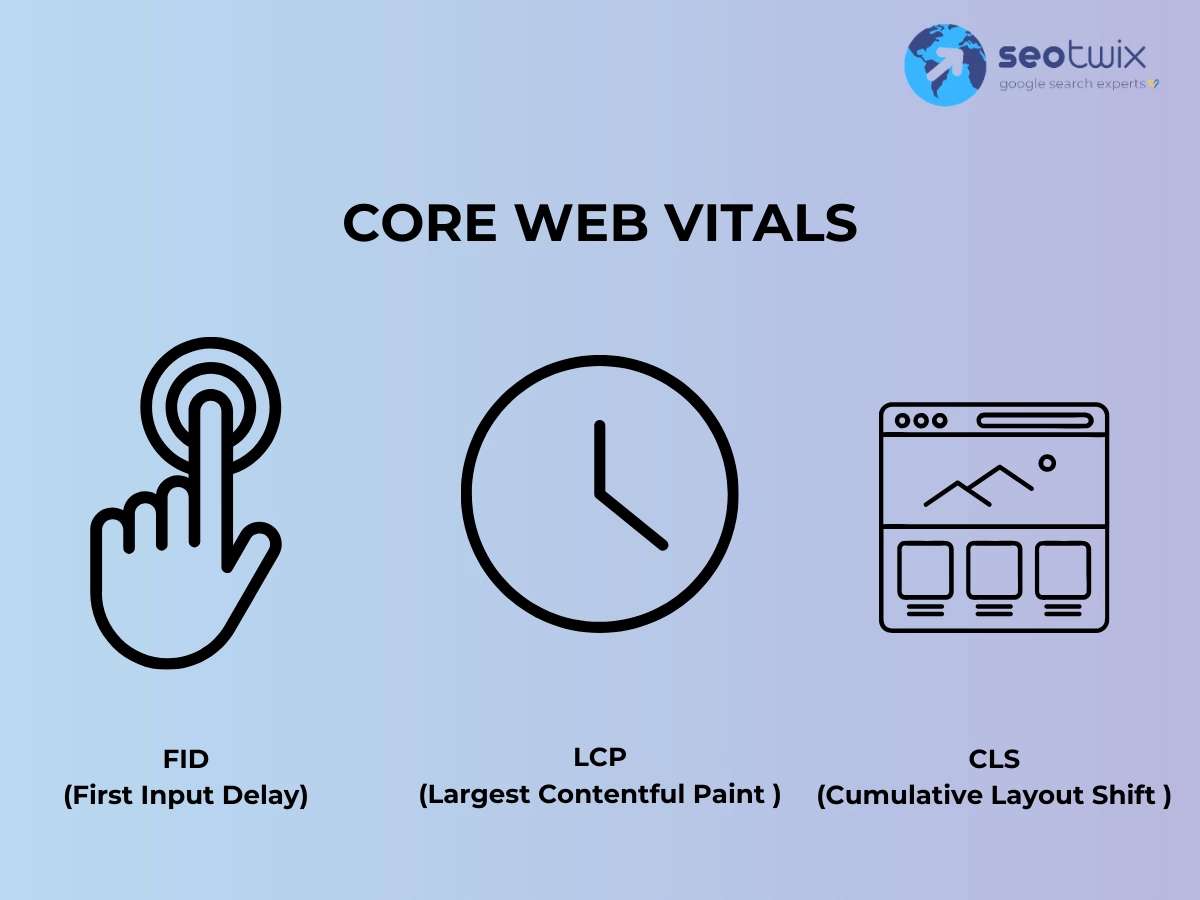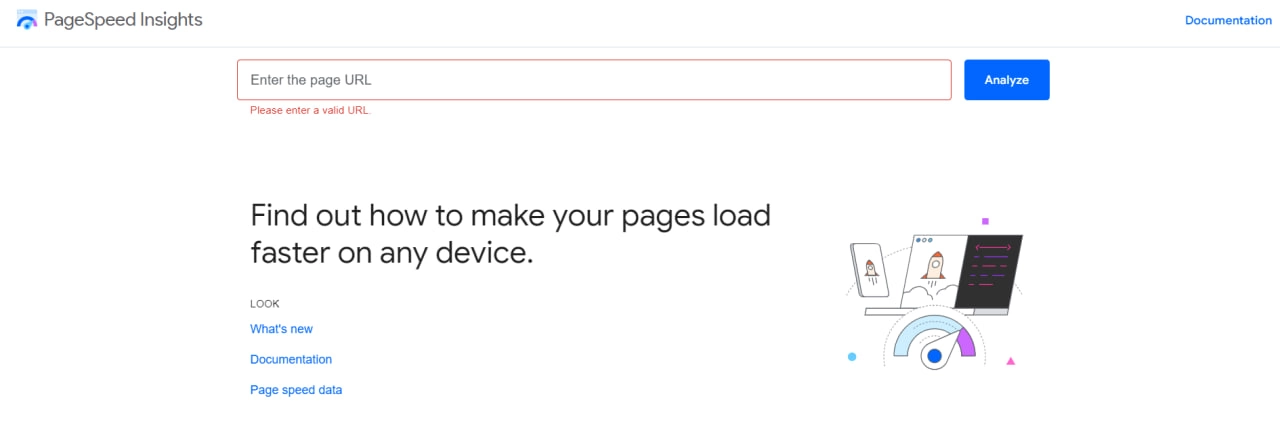In today’s digital landscape, a website’s performance is paramount not only for user experience but also for search engine optimization (SEO). Enter Core Web Vitals—a set of metrics introduced by Google designed to quantify the essential elements of web performance and user experience. These metrics are critical in determining how well your website performs in real-world conditions, affecting everything from loading speed to interactivity and visual stability. As search engines continue to prioritize user-friendly websites, understanding and optimizing Core Web Vitals has become crucial for anyone looking to improve their site’s performance and SEO.
What exactly are Core Web Vitals?
Google is introducing a new “Page Experience Signal” that combines Core Web Vitals with other factors such as mobile-friendliness, safe browsing, and HTTPS to score a user’s experience loading a webpage. Core Web Vitals consist of three metrics: LCP, CLS, and FID. LCP. Core Web Vitals are a set of metrics that measure the performance of a website. They are designed to help webmasters and developers understand how their websites are performing in terms of user experience.
- Largest Contentful Paint measures the time it takes for a page’s main content to load, focusing on the render time of the largest visible image or text block. If a site has a large image or video background that takes a long time to load, it may struggle to meet Google’s new guidelines.
- CLS, or Cumulative Layout Shift, measures layout instability caused by resources and content being loaded above existing content, such as large images, ads, or sidebar widgets that push down content after it has loaded.
- FID, or First Input Delay, measures the delay in processing a user’s input when the browser is busy parsing a large JavaScript file. It quantifies user frustration when the browser cannot respond to a user’s input immediately, even when visual elements have loaded on the screen.
While some studies suggest that improving Core Web Vitals can lead to better rankings, these factors are only considered tiebreakers or small ranking factors. Nonetheless, businesses should focus on improving their Core Web Vitals to provide a better user experience and avoid losing traffic and potential customers due to slow loading or unstable content.
Why Core Web Vitals Are Important
Google emphasized that Core Web Vitals is used as part of its search engine results page (SERP) ranking algorithm. Google uses over 200 ranking factors, but not all of them carry much weight. Core Web Vitals, in particular, are referred to as tiny ranking factors or tiebreakers by Google reps. While improving Core Web Vitals may not result in a significant boost in rankings, they still play a role.
Speed metrics have been a ranking factor for many years, but the impact of the mobile page experience update was uncertain due to a couple of Google core updates during the same period. Some studies suggest a positive correlation between passing Core Web Vitals and better rankings, but these results should be viewed with skepticism. Sites that focus on Core Web Vitals likely also do other things right.
How To Measure Core Web Vitals
Measuring Core Web Vitals is essential for understanding and improving your website’s performance. Google provides several tools and methods to help you accurately gauge these critical metrics. Here’s a comprehensive guide on how to measure Core Web Vitals effectively:
Google PageSpeed Insights
Google PageSpeed Insights is a free tool that provides a detailed analysis of your website’s performance, including Core Web Vitals metrics. By simply entering your URL, you can receive scores for the three main Core Web Vitals:
- Largest Contentful Paint (LCP): Measures loading performance. Aim for an LCP of 2.5 seconds or less.
- First Input Delay (FID): Measures interactivity. Aim for an FID of less than 100 milliseconds.
- Cumulative Layout Shift (CLS): Measures visual stability. Aim for a CLS score of less than 0.1.
PageSpeed Insights offers both mobile and desktop results, allowing you to see how your site performs across different devices.
Google Search Console
Google Search Console includes a Core Web Vitals report that provides an overview of your site’s performance. It categorizes your pages into “Good,” “Needs Improvement,” or “Poor” based on real user data (field data) collected through the Chrome User Experience Report (CrUX). This report helps you identify pages that require optimization and track your progress over time.
Lighthouse
Lighthouse is an open-source, automated tool for improving the quality of web pages. It provides detailed audits for performance, accessibility, progressive web apps, SEO, and more. When you run a Lighthouse audit, you’ll receive scores for each Core Web Vital, along with specific recommendations for improvement. Lighthouse can be accessed via Chrome DevTools, the command line, or as a Node module.
How To Improve Core Web Vitals
To improve Core Web Vitals, website owners can implement five steps to improve their site's performance.
Reduce Javascript Execution
Poor FID scores indicate that a page interacts with users for over 300 milliseconds, so optimizing and reducing JS execution is crucial to reduce the time between the browser execution of JS code and the page. One way to reduce JS execution is by deferring unused JS and splitting one JavaScript bundle into smaller pieces.
Implement lazy loading
Lazy loading allows images to load at the precise moment when users scroll down through the page, thereby improving a site’s performance and limiting bandwidth usage, improving SEO, and reducing bounce rates.
Optimize and compress images
Optimizing images can make a page significantly lighter, thus improving the loading speed, LCP score, UX, and search engine rankings. Compressing images with TinyJPG and using next-generation formats like JPEG 2000, JPEG XR, or WebP can also reduce the page size. In addition, using a Content Delivery Network (CDN) can store content on servers all over the world, allowing images to load faster from the server closest to users.
Provide proper dimensions for images and embeds
CLS scores over 0.1 indicate a website’s pages have unexpected layout shifts. To prevent unexpected layout shifts, website owners can provide proper dimensions for images and embeds.
Improve server response time
To improve server response time, website owners can reduce the amount of data sent, enable compression, and leverage browser caching.
Improving Core Web Vitals is crucial for website owners who want to improve their pages’ user experience and search engine rankings. By following the tips in this article, website owners can ensure their sites are in line with the algorithm update and improve their Core Web Vitals scores from poor to good.
For those looking to achieve optimal results more efficiently, consider leveraging the expertise of our SEO specialists. Our team is dedicated to not only enhancing Core Web Vitals but also to providing comprehensive strategies tailored to your unique needs. By partnering with our SEO experts, you can ensure a seamless improvement in performance metrics, driving better engagement and higher rankings for your website.






